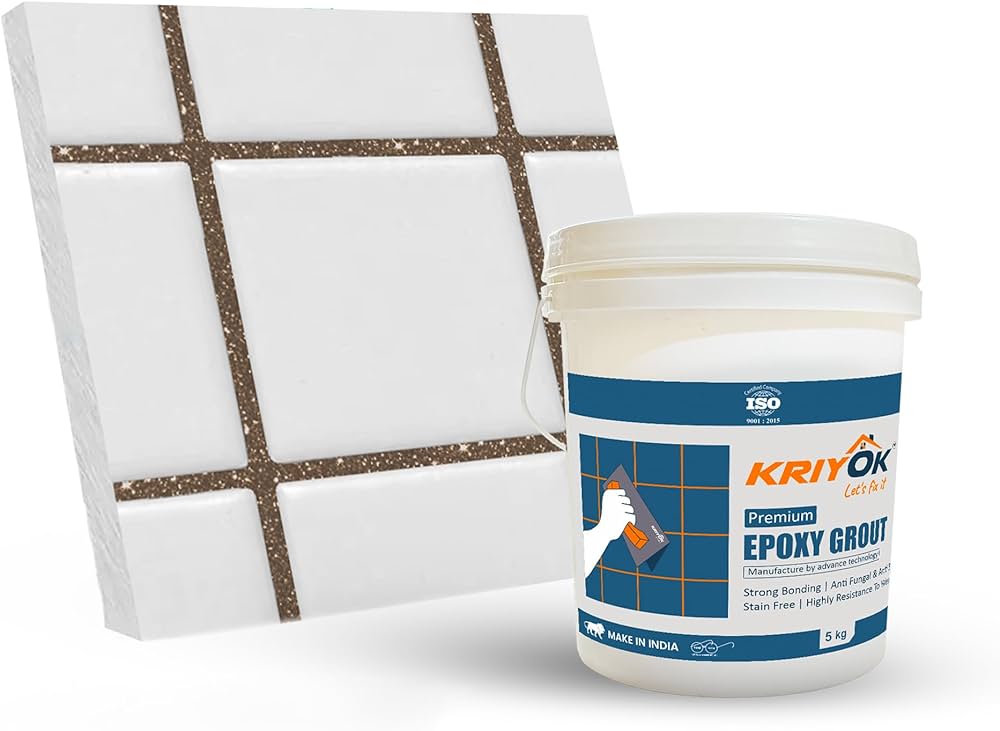Ever felt like grout was the ultimate puzzle piece holding your tiles together, one crumbly crevice at a time? But what if you discovered that there’s a whole world of alternatives out there, waiting to be explored? Imagine a seamless finish, a clean look, and a maintenance dream come true. You’re about to uncover a few unexpected surprises that might just change your tile game forever. Read Epoxy Grout India
Epoxy Grout
- Consider using epoxy grout as a durable and long-lasting alternative to traditional grout between your tiles. Epoxy grout offers numerous benefits that make it a popular choice for tile installations. One of the main advantages of epoxy grout is its resistance to stains, cracks, and chemicals, ensuring a pristine look for your tiled surfaces over time. Additionally, epoxy grout is highly durable and less prone to cracking or shrinking, making it ideal for high-traffic areas in your home.
- When applying epoxy grout, it’s essential to follow some key tips to achieve the best results. Ensure that the surface is clean and dry before application to promote proper adhesion. Mix the epoxy grout according to the manufacturer’s instructions to guarantee a consistent and smooth consistency. Work in small sections at a time, spreading the grout evenly and pressing it into the spaces between the tiles. Finally, use a damp sponge to clean off any excess grout from the tile surfaces before it sets completely. By following these application tips, you can achieve a professional and long-lasting finish with epoxy grout.

Caulk
- For a seamless and water-resistant finish between tiles, caulking is a versatile solution that provides both functionality and aesthetic appeal. When applying caulk, ensure the surface is clean and dry, and use a caulk gun for precise application. Cut the tip of the caulk tube at a 45-degree angle to control the bead size, then gently squeeze the trigger while moving the gun steadily along the joint. Smooth the caulk with a wet finger or a caulk finishing tool for a professional look.
- To remove old or damaged caulk, use a utility knife or a caulk removal tool to carefully cut along the edges of the caulk line. Peel or scrape off the old caulk, ensuring not to damage the tiles. Clean the area thoroughly to remove any residue before applying new caulk.
- Always choose a high-quality silicone or acrylic caulk that’s mold and mildew resistant for long-lasting results. With proper caulk application and maintenance, your tiled surfaces won’t only look great but also remain protected from water damage.
Also Read Manufacturers of Tile Adhesive, Wall Putty & Epoxy Grout
Tile Spacers
- Enhancing the precision of your tile layout, tile spacers are small, removable tools that ensure consistent spacing between tiles during installation. These tiny but crucial accessories come in various sizes to accommodate different spacing needs, providing a uniform look to your tiled surface.
- When it comes to tile leveling, spacers play a vital role in helping you achieve a professional finish. By keeping an equal distance between tiles, they ensure that your layout remains symmetrical and visually appealing. This precision is key to avoiding uneven grout lines and creating a polished overall appearance.
- Once your tiles are set and the adhesive has dried, it’s time for spacer removal. This process involves gently pulling out the spacers from between the tiles before grouting. Be careful not to disturb the placement of the tiles while doing this to maintain the alignment you worked hard to achieve. After spacer removal, you can proceed with grouting to fill in the gaps and complete your tile project seamlessly.
Silicone Sealant
- Using a high-quality silicone sealant can provide a durable and waterproof solution for sealing gaps between tiles. This waterproof sealant offers flexibility and durability, making it an excellent alternative to traditional grout. Silicone sealant is ideal for areas prone to moisture, such as bathrooms and kitchens, as it creates a watertight barrier that helps prevent water damage and mold growth.
- The flexibility of silicone sealant allows for natural movement of the tiles without cracking or deteriorating, ensuring a long-lasting solution. Its durability ensures that the seal remains intact even in high-traffic areas, maintaining the aesthetic appeal of your tiled surface.
- When applying silicone sealant, ensure the area is clean and dry for optimal adhesion. Use a caulking gun to apply a smooth, even bead of sealant along the gaps between the tiles, then use a damp cloth to remove any excess. Allow the sealant to cure fully before exposing it to moisture for the best results.
Grout Alternatives Comparison
Consider exploring innovative tile joint solutions that offer enhanced durability and aesthetic appeal as alternatives to traditional grout. When comparing grout alternatives, two standout options are tile adhesive and groutless tiles.
- Tile adhesive provides a strong bond between tiles, eliminating the need for traditional grout lines and offering a sleek, modern look. On the other hand, groutless tiles, such as interlocking tiles, provide a seamless finish without the hassle of grout maintenance. These tiles fit together like puzzle pieces, creating a smooth surface that’s easy to clean and maintain.
- In addition to tile adhesive and groutless tiles, another popular choice is groutless flooring. This type of flooring utilizes interlocking tiles that snap together without the use of grout. Groutless flooring not only simplifies the installation process but also provides a clean and uniform appearance. By considering these grout alternatives, you can achieve a stylish and durable tile surface without the drawbacks of traditional grout.
Conclusion
So there you have it, four great alternatives to traditional grout for your tiles. Whether you choose epoxy grout for durability, caulk for flexibility, tile spacers for precision, or silicone sealant for water resistance, there’s a solution out there for every project. Consider the pros and cons of each option and choose the one that best fits your needs. Say goodbye to grout and hello to a beautiful, long-lasting tile installation!